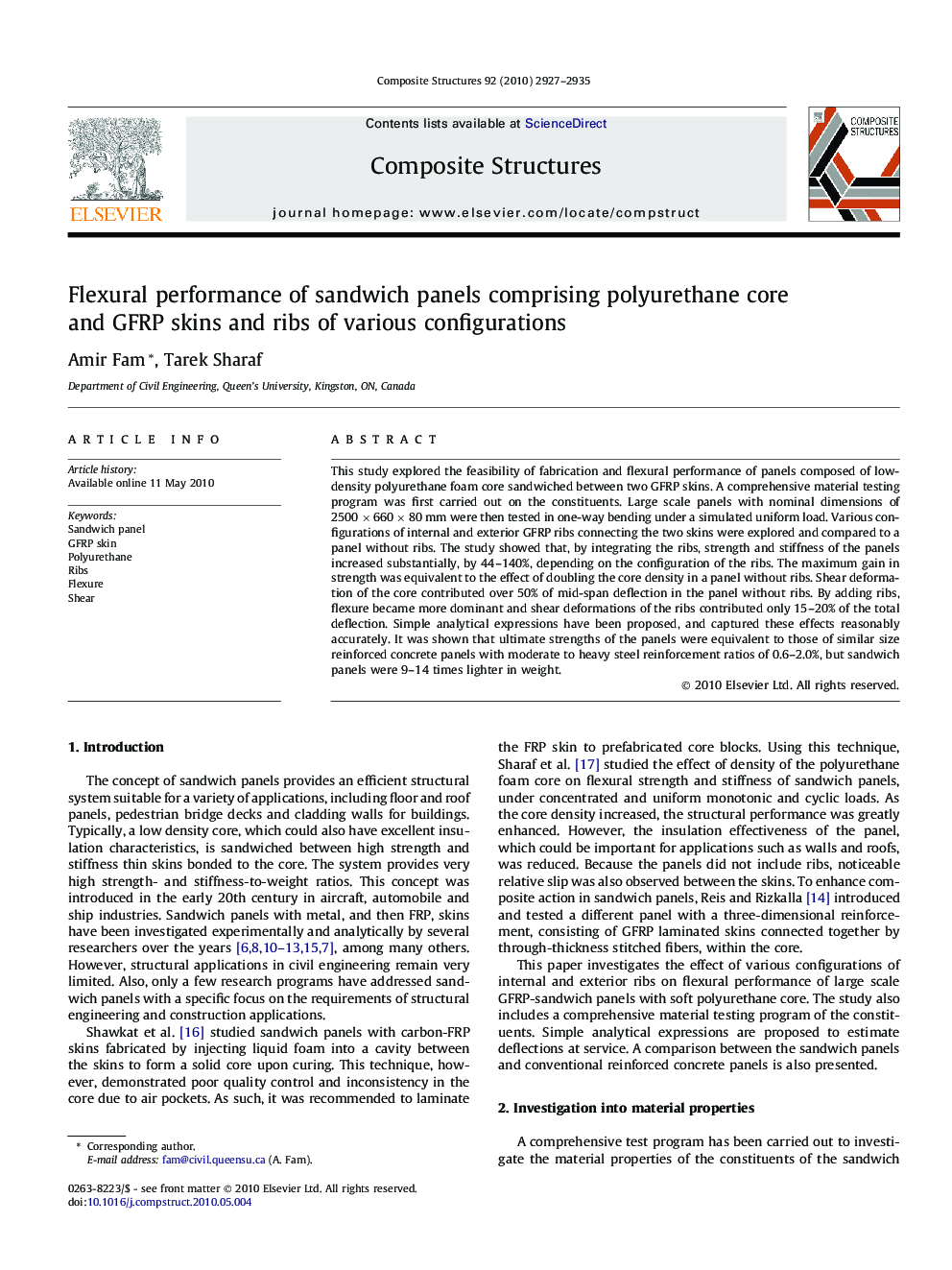| Article ID | Journal | Published Year | Pages | File Type |
|---|---|---|---|---|
| 253513 | Composite Structures | 2010 | 9 Pages |
This study explored the feasibility of fabrication and flexural performance of panels composed of low-density polyurethane foam core sandwiched between two GFRP skins. A comprehensive material testing program was first carried out on the constituents. Large scale panels with nominal dimensions of 2500 × 660 × 80 mm were then tested in one-way bending under a simulated uniform load. Various configurations of internal and exterior GFRP ribs connecting the two skins were explored and compared to a panel without ribs. The study showed that, by integrating the ribs, strength and stiffness of the panels increased substantially, by 44–140%, depending on the configuration of the ribs. The maximum gain in strength was equivalent to the effect of doubling the core density in a panel without ribs. Shear deformation of the core contributed over 50% of mid-span deflection in the panel without ribs. By adding ribs, flexure became more dominant and shear deformations of the ribs contributed only 15–20% of the total deflection. Simple analytical expressions have been proposed, and captured these effects reasonably accurately. It was shown that ultimate strengths of the panels were equivalent to those of similar size reinforced concrete panels with moderate to heavy steel reinforcement ratios of 0.6–2.0%, but sandwich panels were 9–14 times lighter in weight.
